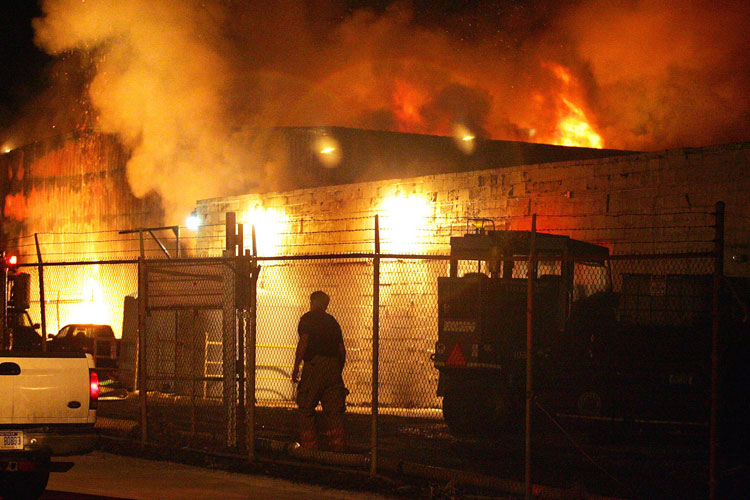By the year 2009, there were over 280 fires and explosions caused by dust in the United States. These incidents that occurred within a period of 25 years caused 119 deaths and 700 injuries. Damages were in millions of dollars. It is also likely that many more incidents (at least 80) were not documented.
The National Emphasis Program (NEP) was launched by OSHA IN October 2007 to check for dust hazards, policies for industrial plants and come up with implementations to cut dust explosion risks. The NEP was also tasked to implement the National Fire Protection Association (NFPA) standards and codes.
Dust Risks
Many people in the chemical processing industry don’t fully understand the risks posed by dust. While many people understand that certain dust poses an explosion or fire risk i.e. grain dust, coal dust, and fertilizer dust – few understand that there are other specks of dust out there that can cause the exact type of damage. This fact was driven home when Imperial Sugar was engulfed in flames due to a dust explosion.
This explosion was mind boggling even for OSHA who at the time, couldn’t understand how a non-hazardous material like plastic or sugar can cause an explosion.
Here's what happened:
It takes three modules to make a fire; fuel, oxygen and a source of ignition.
This means that fire is a chemical process, better known as an oxidation reaction. Now it’s easy to understand how a non-hazardous material can become a fire or explosion risk.
Most materials oxidize. Let’s take an iron for example. When iron is exposed to air, it rusts – but this process takes a long time to occur (weeks). However, if the same iron is ground up into small particles, more surface area is exposed and will react with the oxygen at a faster rate. This sort of reaction also releases heat, if the reaction continues at a faster rate, it will generate heat more rapidly. The heat will then make the gases around the particles to expand.
The heat that is generated combines with oxidation process to create a flame front. If the flame front moves slower than the speed of sound, this is considered as deflagration. When this process takes place in an enclosed space, there will be a rise in pressure and this will lead to an explosion and damage the enclosure.
If the flame and pressure move faster than the speed of sound, the explosion is regarded as a detonation. This type of reaction is massive and cannot be controlled with pressure relief vents.
This type of reaction is the same one that takes place with any material that can oxidize with the release of heat – also known as an exothermic reaction. This means that plastics, organic chemicals, carbon compounds, metals, foods, chemical intermediates and pharmaceuticals create a risk in fine powder form.
In contrast, those materials that call for heat addition to oxidize (endothermic reactions) will not unexpectedly burn or explode.
Reducing Dust Hazards
It is not possible to eliminate all dust, but the main goal should be the elimination of any chance of an explosion inside the facility.
How do you do this?
By eliminating dust accumulation from all exposed and hidden surfaces inside the plant.
Collected dust once dislodged from the surface by the primary blast causes a secondary explosion that is more devastating.
According to the NFPA, dust as little as 1/32nd of an inch (thickness of a paper clip) is enough to cause an explosion. This is the area that OSHA focuses on when inspecting facilities.
To get rid of dust risks, you must:
- Identify the problematic areas
- Identifying that dust is dangerous
- Eliminating dust hazards
In any industrial facility that produces or generates powdered materials, there are chances that the dust will escape from the processing and conveying equipment. The dust usually settles on horizontal surfaces close to its source. Dust also settles on stairs, light fixtures, on top of equipment, support steel and railings.
These surfaces are visible and therefore, often cleaned. The hidden surfaces, on the other hand, are overlooked. These include trusses, support steel, equipment surfaces above eye level, piping and many other hidden areas. These are the areas that OSHA concentrates on and you should always make sure that they’re cleaned. The main point is to clean all visible and hidden areas.
The second aspect of reducing the risk of a dust explosion is to identify the hazardous nature of dust accumulating in your facility. Certain specks of dust do not pose an explosion or fire risk. It is common knowledge that all dust be cleaned for safety reasons, the emphasis is to center on dust that poses a risk.
You should carry out an inventory of all specks of dust in the facility and review material safety data sheets (MSDS) to know if there’s a risk. If the MSDS is not available, physical testing must be carried out. Any unidentified dust must be classified as a risk.
General housekeeping is the only way to address all the dangers of combustible dust. This involves reviewing the processes in your facility to address any openings that cause the dust to escape and to eliminate all sources of ignition.













